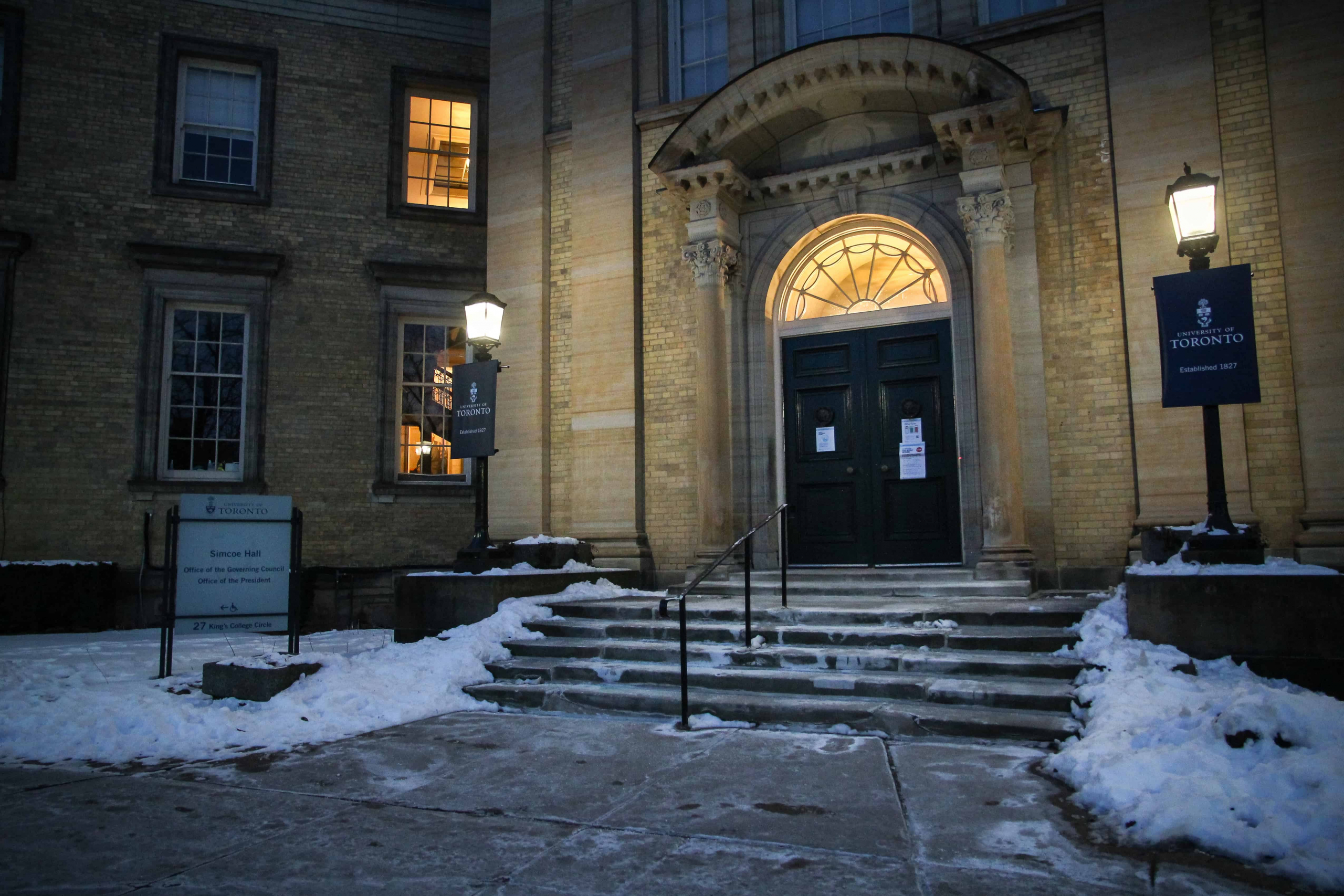U of T’s governance structures are far from conducive to student advocacy. While student positions exist within a number of these structures, they are underrepresented, with not enough seats to carry or block motions. This is a likely reason why there are regular tuition increases. In order to combat this, we need to advocate for more and better student representation in U of T’s governance structures.
The U of T Governing Council is the university’s highest decision-making body, which can determine whether tuition fees increase. The Governing Council also appoints U of T’s president. According to the U of T website, it has “50 members – 25 members from within the internal University community, including administrative staff, teaching staff and students, and 25 members external to the University, including alumni and Lieutenant-Governor-in-Council appointees.”
Students only make up eight of the 50 seats — 16 per cent — divided into four full-time undergraduates, two part-time undergraduates, and two graduate students, despite tuition and other fees accounting for 63 per cent of U of T’s budget in 2020.
By contrast, 17 are government or presidential appointees — 35 per cent — 12 are teaching staff — 24 per cent — eight are alumni — 16 per cent — and two are admin staff — four per cent — all of whom can arguably benefit from tuition increases without bearing the additional costs. For student representatives on the Governing Council to enact change or block a motion, they must negotiate with these non-student stakeholder groups.
To show an indication of how well this politicking has worked, domestic tuition fees for first-year engineering students increased from $7,420 in 2006–2007 to $14,180 in 2020–2021 — a 91 per cent increase — despite inflation only increasing about 23 per cent since 2007. For international students in the same year and program, tuition increased from $18,900 in 2006–2007 to $60,440 in 2020–2021 — a 220 per cent increase.
When the money is on the line, students can be easily outmanoeuvred by the other stakeholders, leaving their votes in opposition to tuition increases relegated to symbolism. However, it doesn’t have to be this way. Other universities around the world have adopted different models that include more student representation in their governance structures.
At universities in Scotland, such as the University of Aberdeen, the University of Glasgow, and the University of St. Andrews, a rector who chairs the equivalent of the Governing Council is directly elected by students. Mondragón University in Spain operates under a more cooperative model whereby students have more of a say in decision-making by being considered partners of the university, which helps level the playing field between students and other stakeholders.
Other ways of restructuring universities have been theorized, involving a trust system where students are included as beneficial co-owners of university assets to help prevent privatization, as well as more horizontal decision-making structures that give students more authority — and perhaps even autonomy — in certain aspects of university governance.
At the far end of the spectrum is the case of the medieval University of Bologna, where students rose up and took control of the university through a fee boycott, which led to the equivalent of the campus student union being the highest decision-making body instead of something like the Governing Council.
A concerted campaign advocating to increase representation on U of T governing bodies, starting with the Governing Council, could lead to increases in the proportion of student representatives.
This could be implemented through lobbying student and non-student Governing Council members, raising awareness on social media, campaigning through petitions and physically-distant demonstrations, convincing U of T’s student unions to mobilize their students and resources to help, and building a coalition of community and external organizations that can provide additional promotion and support. Such a grassroots campaign would likely have to be combined with a Governing Council motion to add more student seats or increase their proportion.
However, there are other possible motions that could enact similar effects or help with the process, including allocating more funds, resources, and staff to student Governing Council representatives to help them engage their constituents about important issues, increasing caps for student representatives on Governing Council sub-bodies like the Business Board, and ensuring that student representatives are well-compensated for their work.
There are other ways that student representation on the Governing Council could be restructured. For example, what if student representation on the Governing Council consisted of delegates from U of T student unions who are already elected by students instead of holding separate elections for another set of representatives? Conversely, what if Governing Council student representatives had some kind of role in their respective student unions and were elected via the student union electoral system instead of one created by the university?
What if there was some kind of forum where students elected to governing boards and student union executives met regularly to develop unified strategies toward enacting policy goals? Developing ways to better integrate student unions into university decision-making processes could lead to students having more say as a collective and could help prevent the chance of student governments being circumvented. While a multi-year campaign would likely be needed to increase student representation, the benefits if successful would be immense.
Justin Patrick is a PhD student at the Ontario Institute for Studies in Education and is the president of the International Association for Political Science Students. He served as the internal commissioner of the University of Toronto Graduate Students’ Union from January to April 2019. He was also a governance and policy analyst for the University of Toronto Students’ Union from June to September 2019.


